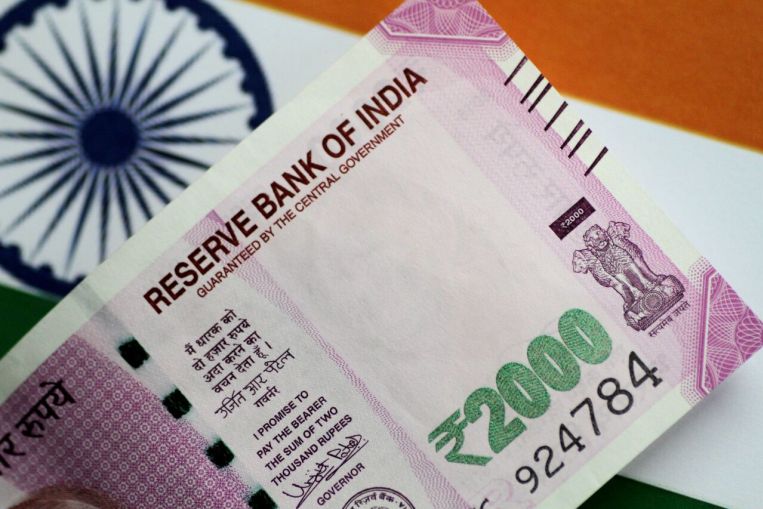MUMBAI (BLOOMBERG) – After months of wild volatility in the rupee, India’s widening trade deficit and elevated commodity prices are bearing down on the currency, reinforcing a recent downward bias and pushing it towards a new low for the year.
That is the view of traders who have seen the rupee whipsaw from being Asia’s best performer in the first quarter to its worst in April when another wave of Covid-19 infections took hold.
This volatility and the prospect of tapering by the United States Federal Reserve have also reduced the attractiveness of India’s currency for carry trades, adding to its headwinds.
“We expect oil and broader commodity complex prices to remain elevated in the short term, which will weigh on India’s trade balance,” said Standard Chartered’s Parul Mittal Sinha, who heads the bank’s India financial markets and macro trading for South Asia. “We maintain a bearish view on the rupee.”
Standard Chartered and RBL Bank forecast the currency to depreciate to 76 per dollar by year end, while their peers at Deutsche Bank have a slightly less pessimistic projection of 75.
The rupee closed at 74.635 on Friday while Brent crude, the benchmark for India’s oil imports, was around US$76 per barrel, up more than 45 per cent since the start of the year.
How Covid-19 Unraveled Decades of Economic Progress in India
Amid the devastating human toll that the coronavirus is taking in India, the rate of increase in new infections is slowing, which is improving the prospects for reopening the economy. But as the Covid-19 curve flattens and consumers and businesses become more active, demand for imports is also set to increase, weighing on the currency.
Updated trade data due on Thursday are expected to confirm the deficit widened to US$9.4 billion (S$12.7 billion) last month, from US$6.3 billion in May. Kotak Mahindra Bank estimates that billion-dollar deficits will continue and average in the “double digits” as the economy reopens.
Technical indicators also point to further depreciation of the currency, given dollar-rupee’s moving average convergence-divergence gauge, a measure of momentum, remains above zero in bullish territory. The pair has room to run before reaching resistance at April’s peak of 75.3362.
Yet even RBL Bank’s domestic markets head Anand Bagri, who expects the rupee to weaken, sees pockets of support for the currency, including inflows for equity offerings.
Notable among these is a US$1.3 billion initial share sales from Zomato, and Paytm’s bid for shareholder approval of a US$2.2 billion stock sale that would set in motion the process for the country’s largest ever debut.
The Reserve Bank of India (RBI) also has US$600 billion of currency reserves to draw on to curb any sharp fall in the rupee.
Deutsche Bank chief India economist Kaushik Das said: “We expect the RBI to remain proactive with its FX intervention strategy to ensure limited volatility in the rupee and to prevent excessive rupee depreciation from feeding into inflation.”













































